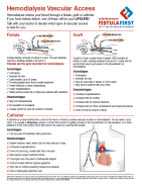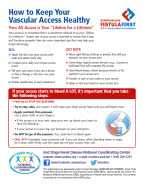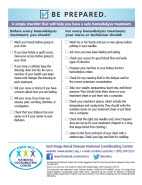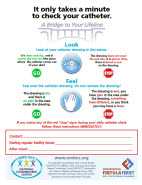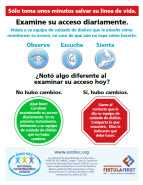Patient Information
Helpful Websites
Overview
Your kidneys perform several critical functions. They clean your blood and support important bodily functions. When your kidneys cannot perform these functions, hemodialysis may be required. The following resources may help you understand infections that hemodialysis patients can get and ways to prevent these infections.
How Hemodialysis Vascular Access Works
A vascular access helps move blood from the patient to the hemodialysis machine. There are three kinds of access: fistulas, grafts and central line catheters. Central line catheters are associated with increased infections rates compared to grafts or fistulas. A fistula generally lasts longer and has fewer problems such as infections and clotting.
- Fistula: an access made by joining an artery and vein, typically in your arm.
- Graft: an access made by using a piece of tubing to join an artery and vein usually in your arm.
- Central Line Catheter: a soft tube that is placed in a large vein, often in the chest.
Hemodialysis and Infections
Among hemodialysis patients, infections are the second leading cause of death. Hemodialysis patients are more at risk of infections such as Staphylococcus aureus and other bloodstream infections and viral hepatitis. Be informed of the risks associated with hemodialysis and learn how you can keep yourself safe.
Take Action to Prevent Infections
- Check your vascular access daily for signs of infection such as redness, pus and swelling. Notify your healthcare professional if you notice these signs.
- Keep your catheter bandage clean and dry. If your bandage gets wet, notify your healthcare professional.
- If you have a central line catheter, ask your healthcare professional why it is needed, how long it will be in place, and if you can use a fistula or graft for your dialysis treatment.
- Make sure that all healthcare providers clean their hands with soap and water or alcohol-based hand sanitizer before and after caring for you or your vascular access site.
Patient Resources
CDC Patient Pocket Guide: 6 Tips to Prevent Dialysis Infections
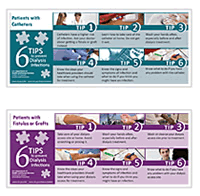
This two-sided guide outlines 6 tips to prevent dialysis infections for patients with central line catheters and 6 tips to prevent dialysis infections for patients with fistulas or grafts. Patients can download this resource in both Spanish and English.
Order here to order this patient resource.
ESRD National Coordinating Center
The End Stage Renal Disease (ESRD) website can help you understand dialysis and answer your questions.
Here are some helpful links:
- Page last reviewed: September 23, 2016
- Page last updated: April 24, 2017
- Content source:


 ShareCompartir
ShareCompartir

